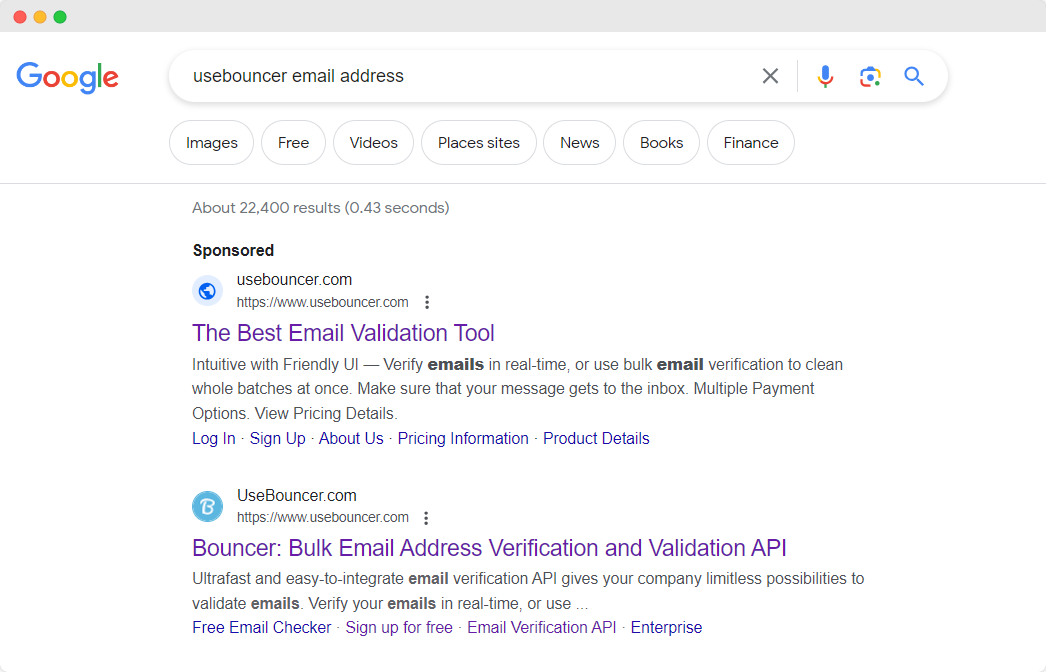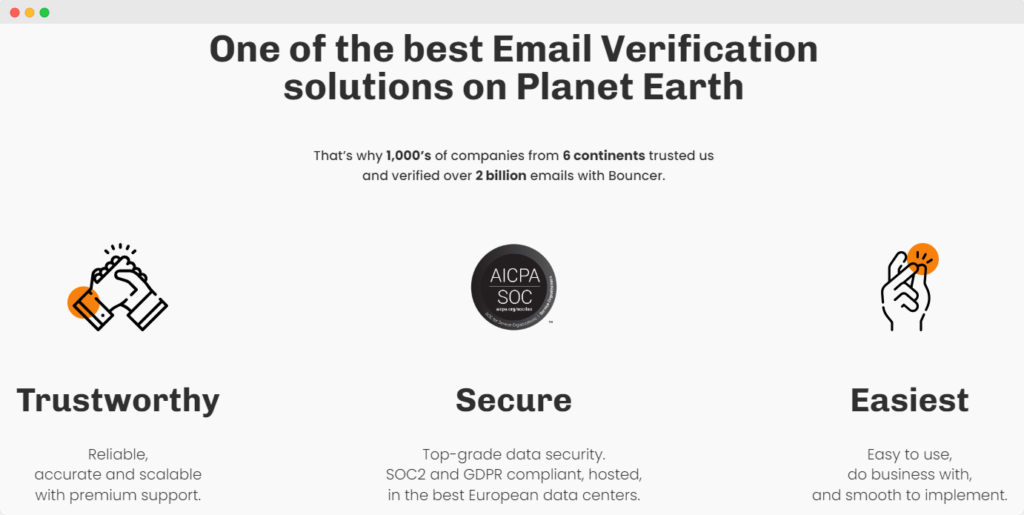Have you ever crafted a perfect email, hit ‘send,’ and then waited… only to receive no response?
This common scenario leaves many wondering if their email ever reached the intended recipient or if it vanished into the digital void.
These days, making sure that your emails land in the right inbox is more important than ever.
Whether you’re a marketer, a business professional, or just trying to stay in touch, knowing if an email exists can save you from this all-too-familiar email limbo.
Let’s take a look at five practical ways to verify email addresses.
All so that your messages don’t just get sent, but also get seen.
Why sending emails to non-existent addresses is bad
Sending emails to non-existent addresses isn’t just a matter of your message not reaching the intended person.
It can have more serious consequences, especially if you’re involved in email marketing.
Here’s why it’s a bad idea:
It damages your sender reputation
Every time you send an email to a non-existent address, it bounces back. If this happens often, it starts to hurt your reputation as a sender. Email providers keep track of how many emails bounce from your account. If they see too many bounces, they might start thinking you’re not a responsible sender.
It increases your chances of being flagged as spam
When your sender reputation takes a hit, your emails are more likely to be flagged as spam. This means even your legitimate emails, sent to real addresses, might end up in the spam folder. This is bad news if you’re trying to reach customers or subscribers because they might never see your emails.
It affects your email deliverability rate
The more you send to non-existent addresses, the worse your deliverability becomes. This is a term for how often your emails actually make it to the inbox. If you’re marked as a spammy sender, your deliverability drops, and fewer of your emails reach their destination.
It wastes resources
Sending emails to the wrong addresses is a waste of time and resources. You’re crafting messages that no one will read.
In general, consistently sending emails to non-existent addresses can spiral into a bigger problem and affect your ability to communicate effectively. It’s always better to regularly clean your email list so that you’re sending messages to valid, active email addresses.
5 ways to check if email exists

To fight the problem of sending emails into the void, there are a few ways to go about things.
Method 1: sending an email to the address
The most straightforward method is to simply send an email to the address.
If it bounces back, it’s likely invalid.
This method, however, isn’t foolproof as some email service providers might not send bounce messages.
Plus, constantly sending emails to check if an address exists can lead to your own address being marked as spam.
Top tips:
- use a polite and neutral subject line to avoid spam filters
- include a request for a confirmation reply
- monitor for bounce-back messages for immediate feedback
Method 2: searching for the address on Google

Try searching for the email address on Google.
Sometimes, people list their email addresses on public platforms like social media or websites.
This can be a quick way to verify email addresses, but it’s not always reliable since not all email addresses are publicly listed.
Top tips:
- try different variations of the email address
- look for the email address in quotes for exact matches
- check social media links in the search results for authenticity
Are you looking to send emails to multiple recipients’ inboxes? Read about mass email sending in 2024 here.
Method 3: doing a password recovery
Another trick is using the password recovery feature on popular platforms.
Enter the email address and see if the system recognizes it.
Remember, this method only works if the email address exists and is registered with the service you’re trying.
It’s a bit of a hit-or-miss approach.
Top tips:
- use this method on major platforms where the person might have an account
- respect privacy and avoid multiple attempts in a short period
- note the response from the site, like “Email sent” or “User not found.”
Method 4: doing an IP address lookup
You can do an IP address lookup to get information about the mail server associated with the email domain.
However, this doesn’t always confirm if the specific email address exists and is more about understanding the domain’s email setup.
Top tips:
- use reputable IP lookup tools for accurate information
- understand that this method gives info about the domain, not the individual email
- check for the domain’s validity and active status
Method 5: using Bouncer to verify the address

Last but not least, we strongly recommend taking advantage of email verification services.
An email verification service like Bouncer is designed to verify emails.
It checks the email address syntax, validates the domain, and even checks against lists of known disposable email address providers.
Using an email verification tool like this is one of the most effective ways to be sure you’re not dealing with invalid email addresses.
Top tips:
- regularly update your email list for verification
- look for services that offer detailed reports on email statuses
- consider the privacy and security policies of the service before using it
Why use Bouncer for email address verification?
Bouncer stands out as a top-tier email verification service. It offers a comprehensive solution for businesses and individuals looking to maintain the integrity of their email lists.
As an advanced email checker, Bouncer excels in verifying email addresses, ensuring that your messages reach the intended recipient without the risk of bouncing back due to invalid addresses.
What sets Bouncer apart is its huge attention to email address syntax and its ability to sift through and identify invalid addresses effectively.
This email validation service is not just about checking if an email exists – it’s about verifying that each address on your list is active and capable of receiving your messages.
This is vital for anyone relying on email communication, as it directly impacts deliverability and engagement rates.
Bouncer streamlines the process of email verification. It’s designed to be user-friendly – all to make it easy for anyone to verify emails without needing technical expertise.
Whether you’re a small business owner, a marketer, or just someone looking to clean up their email list, Bouncer’s email address checker is an invaluable tool.
Give it a try today and see the change for yourself.
Conclusion
With these five easy methods, you can now check if an email address really exists before you hit send.
Whether you’re using a quick email test, doing a Google search, trying a password recovery, looking up an IP address, or using a cool tool like Bouncer – you’re all set to make sure your emails actually land where they should.
With Bouncer, you’re ready to send out those emails with confidence, knowing they’ll reach the right people every time.



